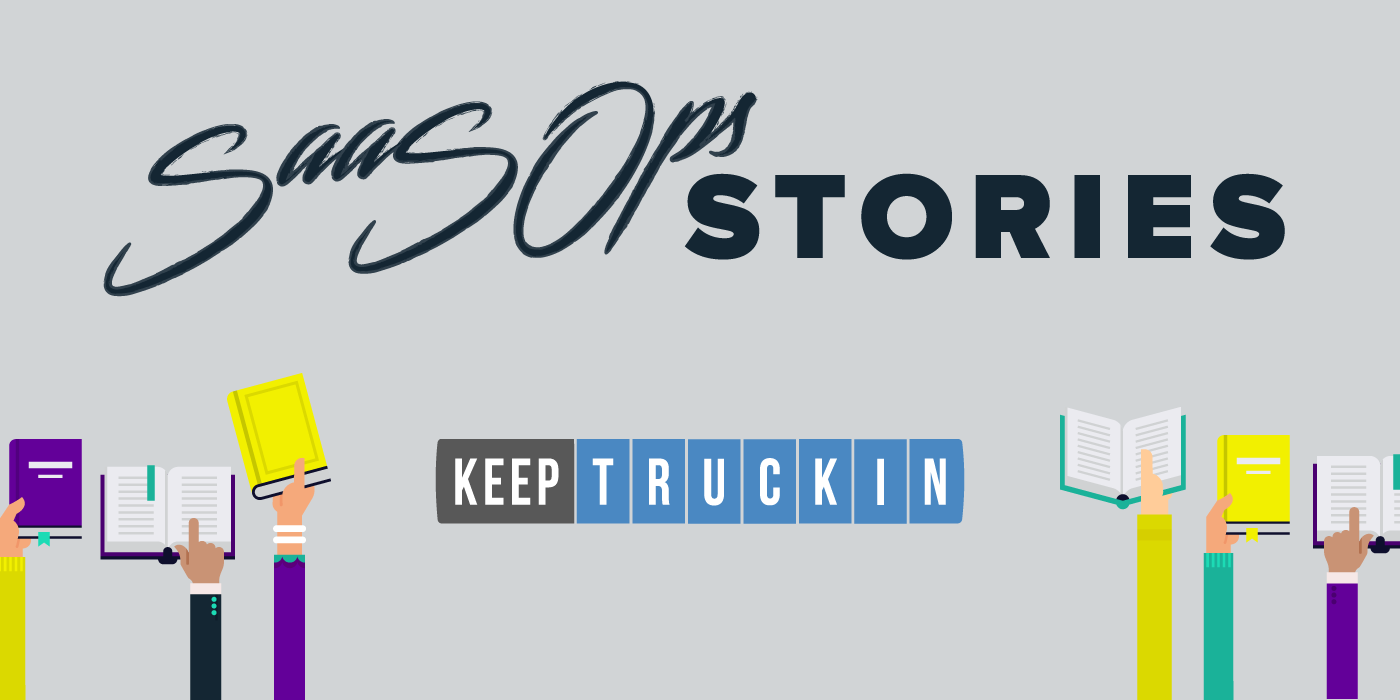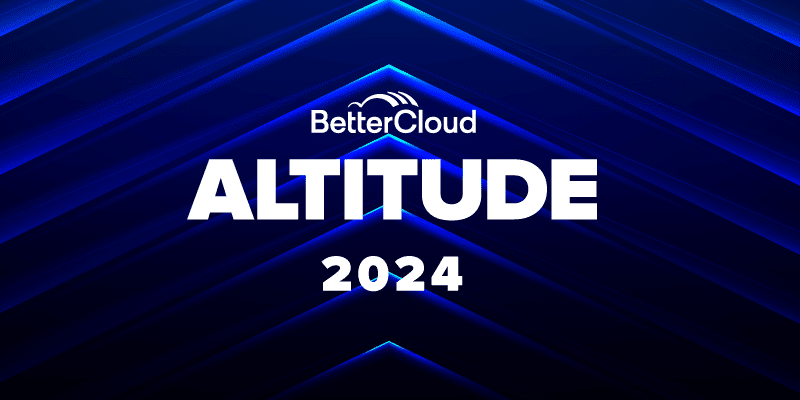SaaSOps Stories With Lauren Tibbs, Global IT Director at KeepTruckin
August 25, 2020
6 minute read

Lauren Tibbs is the global IT director at KeepTruckin, which is making strides to bring the entire trucking industry online. Lauren previously led IT teams at leading companies such as Okta and Blend. Now, she’s in charge of a worldwide IT team with employees in countries such as Pakistan, India, and Taiwan, just to name a few.
Rachel Orston, chief customer officer here at BetterCloud, sat down with Lauren to chat about her career in management and how her team enabled KeepTruckin to make the sudden shift from an office-first to remote work environment when the COVID-19 pandemic hit.
Editor’s Note: This conversation has been edited lightly for clarity.
Tell me a little bit about how you got to where you are today. What were some of the experiences that helped shape your career?
Getting to IT was an accident. After college, I worked in phone support at a few startups. I really enjoyed it, but what I liked most about those calls were the technical challenges. When the economy collapsed in 2008, I was unemployed for about 11 months, which was pretty brutal, but I took the time to start learning IT from some friends. It was always a hobby of mine.
When I was in college, I used to repair laptops on my floor. It was just a thing I enjoyed because I loved to play video games and I liked to fix broken things. It just never occurred to me that it could be a career.
What made you decide to move into management?
It was a combination of things. I was very fortunate to have a strong mentor early in my career. He was the director of IT at a small payroll company, and he took a chance on me with no Computer Science degree. Everyone else at the company had all these certifications that I didn’t have, and he said,”No, you can learn this. Why do you think you can’t?” Unfortunately, I went to a few companies after that with a very obvious leadership void, which was really confusing to me.
What I found is that IT was often the orphaned child. Companies lumped us in with HR or finance. We had no home, no seat at the table, no executive to support us. It blew me away; I’d had direction and then suddenly it was gone.
I decided I needed to fill the leadership void on my own. I was a team lead and we were all struggling. What’s our direction? Where are we going? Is this what’s best for the company? Is this what the company is trying to do? We didn’t know. When the opportunity came at Okta to become a manager, I jumped at it because I figured if there’s nobody in that role, someone has to do it. I approached it as just another hat to wear, which is totally different than how I’d approach it now. I didn’t know where to start.
How did that transition from individual contributor to manager influence your leadership style, and how does it influence how you lead today?
My team is fantastic. They work so hard, and they deserve somebody who is going to look out for them and say things like, “They’re not being paid enough. Here’s why.” They also need someone with the courage to speak up. Sometimes IT tends to be the one who pours a bucket of ice water on everyone’s plans because it doesn’t meet SOC 2 requirements. I feel like if nobody feels comfortable saying something, it’s my job to speak up for them.
As I progressed, I realized that there are very few books on IT management. So my leadership style is to focus on what my staff wants. If IT folks know what they want and can actually get it, it makes the whole company better.
Everything they learn makes us all better, and there just wasn’t anybody giving them that. That made me sad and a little frustrated because it’s never easy and it takes time. So I had to learn patience too.
Were any of your big initiatives derailed at the beginning of the year when the pandemic hit? And were there others that actually accelerated when everyone started working from home?
Yeah, absolutely. When it first happened, we dropped everything just because the biggest priority was enabling people to keep working. We dropped everything to work with all the other departments and executive management to move a 1,700-person organization to remote work for the first time in its history.
That’s interesting. There was nobody working remotely prior to COVID?
Because we build both hardware and software, it often requires a more collaborative and innovative in-person workplace. With hardware staffers in building equipment and testing it in the office, so they need to work with the software folks and we weren’t set up to do that remotely in every office. Thankfully we had all the tools we needed to do it. We had Okta and Workday; everything’s in the cloud for the most part here. We just hadn’t needed to transition everything remotely before.
One of the biggest challenges we had was getting everyone online with a stable internet connection. We bought hundreds of noise canceling headsets and provided hotspots to certain people globally. One challenge we experienced no matter where our team was located was to make sure everyone had reliable internet connection to efficiently do their jobs.
Once you were up and running, what did things look like?
When we finally got to a place where everyone was online at home and safe, the entire roadmap got blown up.
There were three phone systems and we ultimately got everybody onto one. The go-live date was set in stone; it had to happen. But because we weren’t in the office, it took us more time to train everyone and get people going than I would have liked. Given the circumstances, I felt we did a really fantastic job but it was not without its challenges!
Did you have to onboard new applications like Zoom or Slack, or was SaaS already a major part of collaboration?
Yeah, almost everybody had a Zoom account already, and a lot of our work happened in G Suite. Most folks didn’t need a lot of software beyond what we already had. They needed some hardware, like a headset, keyboards, mouse, or ergonomic equipment.
Overall, the transition was seamless. If an individual needed something to make their work from home setup more productive we helped provide it to them. IT drop-shipped monitors and hardware to staff and innovating via collaborative SaaS tools has always been a part of our ethos.
KeepTruckin is a pretty innovative company. Where do you hope to find innovation this year and into next year?
Honestly, I think there’s a huge opportunity here to become more collaborative and efficient. Right now, people can’t just walk by a colleague’s desk to chat. What’s interesting is that we’re just now discovering that there are multiple project management tools, for example. There’s room for us to become more efficient in our communication tools as we continue to work remote.
Those questions have started coming out, and now we have a chance to answer some of those tough questions holistically. How does the staff collaborate, and what’s the easiest way for them to do it? We can automate things that we’ve been wanting to automate for ages, which has been fantastic, but there’s also a huge opportunity here to improve processes, policies, procedures, and documentation.
We’re going to have our first internal IT global documentation day. Everyone is starting to document all the processes that just lived in everyone’s brains. It’ll make it easier to determine if we’re doing things the right way—and if we’re not, let’s think about how to do it better. So we’re trying to list all the ideas everyone’s got and so we can really anticipate the staff’s needs before they even ask.
Shifting gears a bit, I love talking to strong female leaders. There are a growing number of them in IT, but not in the industry you work in. What drew you to KeepTruckin? What surprised you about the environment in ways that you didn’t expect?
The team. They just blew me away with their work ethic and by how much they care. They weren’t just hiring a director because they needed another level of middle management. I was so excited after I had my interview with them because they all wanted it to get better. They needed me at that moment, and everything they said they needed were things I knew that I could do. There was no resistance, and everyone was telling me that we had to try new things.
Finding ways to create more cohesion in our team structures and communication has been really fun. I’ve split the team out into subgroups. Now we have project management, IT security, infrastructure, and help desk. It’s great because they can focus on their area and not be pulled in nine million directions while trying to do projects and other tasks that keep the day-to-day operations going. I am so grateful for them and happy to be able to provide them with structure to make their jobs easier.
One last question: What’s the one thing you’ve missed the most during the pandemic?
I miss going out to restaurants and being able to eat out. I also miss being able to go out and not be nervous about whether or not I’m too close to someone else. I’m happy being at home, but I do love to be out and about. So it would be really nice to be able to go and spend time with people in person.
Want more insights from other IT leaders on navigating the new normal? Check out Orston’s previous conversation with Craig Holland, SVP of global infrastructure at Condé Nast.
Have a story you’d like to share with us? Send us an email here.





